I knew we were in trouble when my father-in-law Bob tried to navigate our guest bathroom during Thanksgiving dinner. At 78, his knees aren’t what they used to be, and watching him struggle to lower himself onto our standard-height toilet—while trying to maintain his dignity—was painful for everyone. Later that weekend, he mentioned that showering in our tub/shower combo had felt “a bit dicey” without grab bars. The bathroom we thought was perfectly functional suddenly revealed itself as an obstacle course for someone with even minor mobility challenges.
And here’s the thing—it’s not just older folks who benefit from thoughtful design. Two weeks after Bob’s visit, I slipped on ice while carrying groceries and wrenched my back. Suddenly those same bathroom fixtures became my personal nemesis too. Ever tried stepping over a tub wall with sciatica? Not recommended.
That weekend was a wake-up call, prompting Andrea and me to take a hard look at our 1930s Tudor with fresh eyes. We’d been gradually updating it room by room, but we hadn’t seriously considered how these spaces would work for us as we aged. More importantly, we hadn’t thought about how small changes now could prevent major renovations later—or how these updates could actually improve our home’s functionality and appearance for everyone, regardless of age or ability.
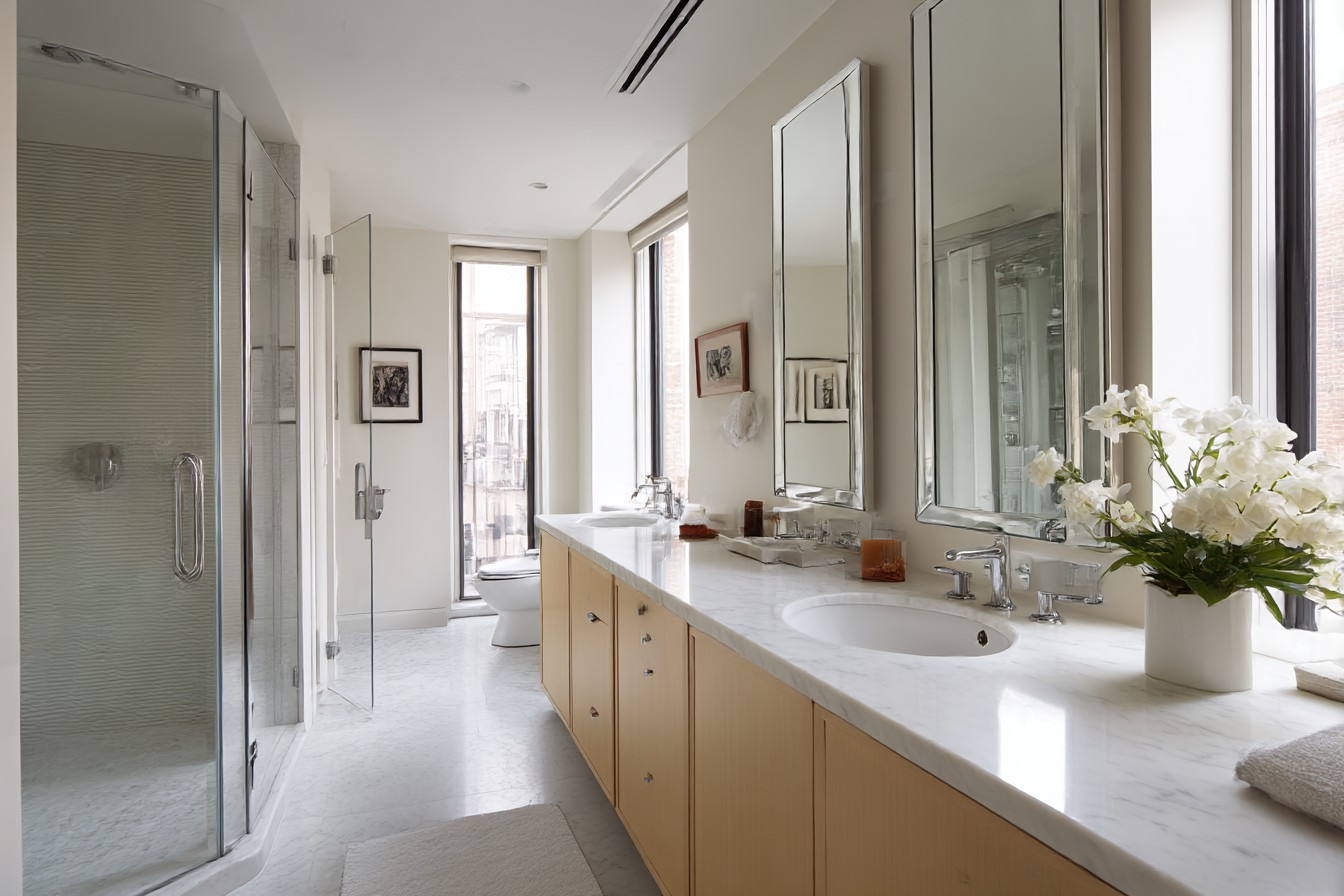
Most homeowners I work with have a mental block about “aging-in-place” modifications. They picture those institutional-looking hospital grab bars, clunky shower seats, and clinical-looking additions that scream “old folks live here!” But that outdated perception couldn’t be further from today’s reality. Modern universal design—creating spaces that work for people of all ages and abilities—has evolved dramatically, with products and approaches that enhance both accessibility and aesthetics.
Let’s start in the bathroom, where small changes can have outsized impact on safety and function. After our enlightening holiday weekend, our guest bathroom got a mini makeover that made it work better for everyone without looking “modified.”
First, we replaced the standard-height toilet (typically 15-16 inches from floor to seat) with a comfort-height model (17-19 inches). This seemingly minor change makes sitting down and standing up significantly easier for folks with knee, hip, or back issues. The best part? Comfort-height toilets look identical to standard models—no one would ever know it’s an accessibility upgrade. Cost difference? Maybe $50-100 more than a standard toilet, an investment that pays daily dividends in comfort.
Next came grab bars, which have undergone a design revolution in recent years. Forget those clinical-looking stainless steel tubes. We installed what looks like a decorative towel bar but is actually rated to support 300+ pounds of force. In oil-rubbed bronze that matches our other fixtures, it integrates seamlessly with the bathroom’s style while providing crucial support for balance-challenged users. Companies like Moen and Delta now offer entire lines of “designer grab bars” that serve dual functions as towel bars, toilet paper holders, or shower shelves.
The tub/shower combo presented a bigger challenge. While replacing it with a curbless shower would be ideal from an accessibility standpoint, that wasn’t in our immediate budget. Instead, we added a high-quality teak shower bench that provides seating if needed but also serves as a convenient shelf for shower products or a perch for shaving legs. When not in use, it folds up against the wall, maintaining the shower’s spacious feel. Unlike those institutional-looking plastic shower chairs, the warm wood tone adds a spa-like touch that actually elevates the bathroom’s appearance.
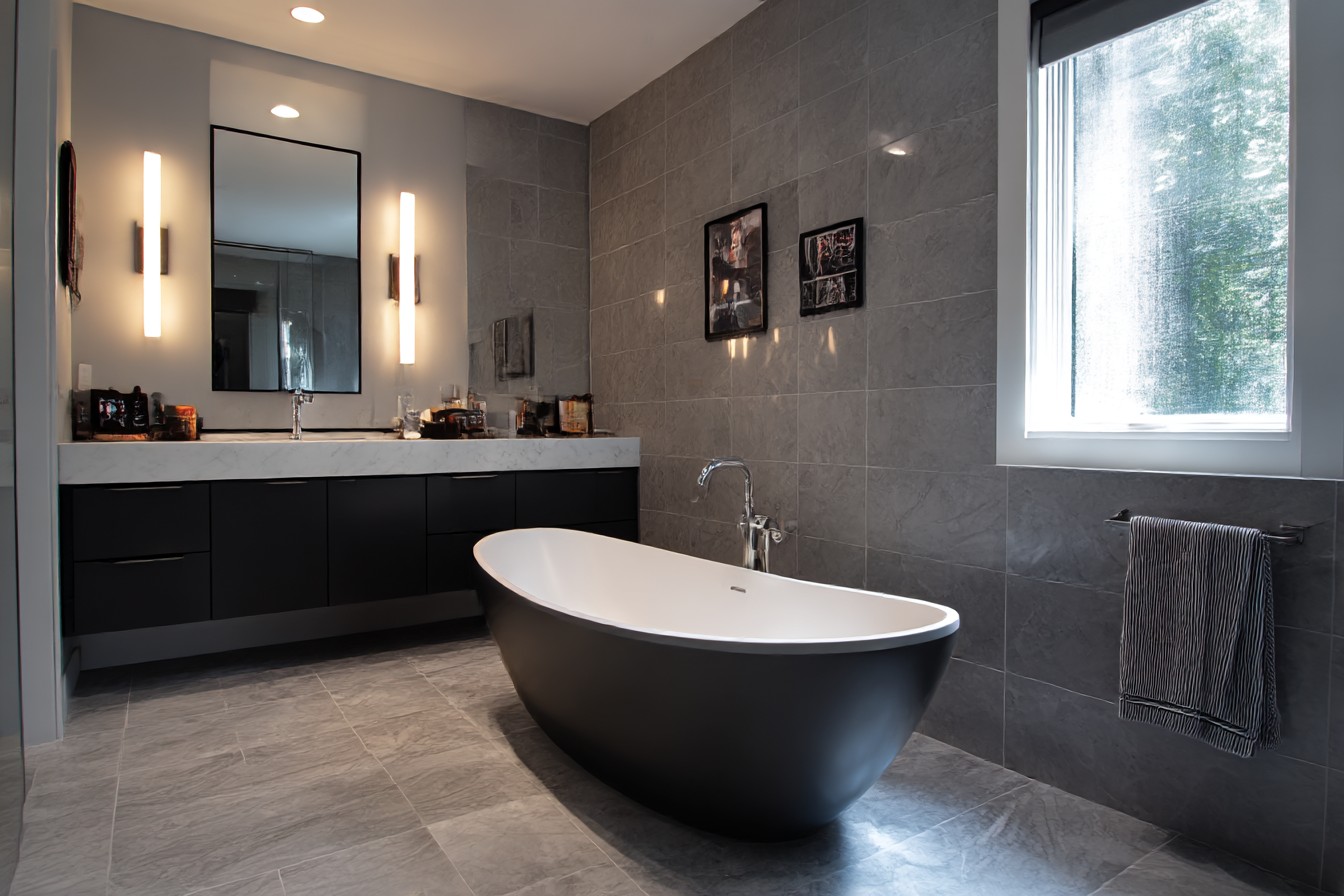
A handheld shower head on a sliding bar completed our bathroom updates. This allows seated showering if necessary but also makes cleaning the shower easier and gives more flexibility for tasks like washing pets or rinsing specific areas. Modern handheld shower designs look sleek and purposeful, not medical, and many come with multiple spray patterns that improve the shower experience for everyone.
All told, these bathroom modifications cost about $750 and took a weekend to implement. None of them scream “aging accommodation,” yet they dramatically improved the space’s functionality for users of all ages and abilities. Even our teenage son commented that the handheld shower was “actually pretty cool” for rinsing shampoo out of his hair more thoroughly.
Kitchens present different challenges but equal opportunities for age-friendly improvements that enhance function for all users. When my clients Mark and Joanne renovated their kitchen last year, they weren’t thinking specifically about aging—they just wanted to update their dated 1990s space. But by incorporating several universal design principles, they created a kitchen that will serve them beautifully for decades to come.
Instead of standard lower cabinets that require deep bending to access, they installed drawers for most base storage. Large, full-extension drawers eliminate the need to kneel down and reach into dark cabinet depths—everything comes out to you instead. This change alone makes a kitchen drastically more accessible without any visual compromise. In fact, drawer bases look more contemporary than traditional cabinets and typically offer better storage efficiency.
For upper storage, they included several key features that improve accessibility without screaming “modified kitchen.” Pull-down shelving systems from companies like Rev-A-Shelf bring items from high cabinets down to counter level with a gentle pull. Unlike old-school lazy susans, these modern mechanisms move smoothly and hold substantial weight. From outside the cabinet, you’d never know this feature exists—it’s completely hidden behind standard doors.
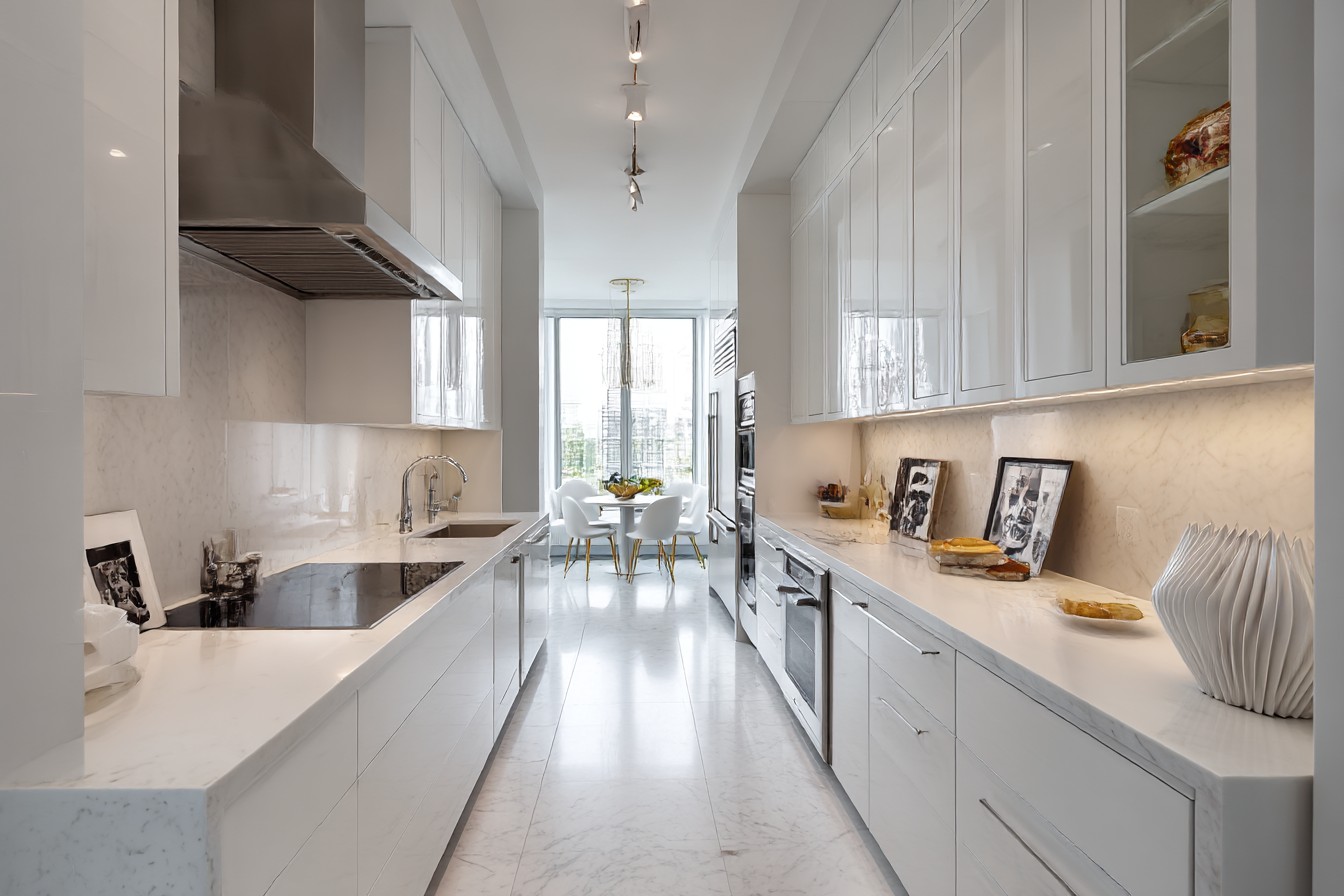
Countertop height is another consideration that benefits users of all ages. While the standard 36-inch height works for many, it’s worth considering whether portions of your countertop might work better at different heights. Mark and Joanne created a 30-inch section perfect for seated work (ideal for when standing becomes tiring) and for their grandchildren who like to help with baking. This lower section looks intentional as a design feature, not as an accommodation, and adds visual interest to the kitchen layout.
Lighting—often overlooked in accessibility discussions—plays a crucial role in creating age-friendly spaces. As we age, our eyes require significantly more light to see clearly. Mark and Joanne’s kitchen incorporated layered lighting: general overhead illumination, targeted task lighting under cabinets, and interior cabinet lighting that activates when doors open. These lighting improvements benefit everyone from teenagers rummaging for snacks to adults following complex recipes, while creating a warm, welcoming atmosphere.
Flooring choices present another opportunity for universal design that enhances both safety and aesthetics. Hard surfaces like tile and hardwood are easier for wheelchairs or walkers to navigate than carpet, but they bring their own challenges in terms of slipperiness and hardness underfoot. When my neighbors replaced their kitchen floor last summer, they chose large-format porcelain tiles with a slightly textured surface that provides better traction when wet without looking “grippy” or institutional.
For other areas where carpet is preferred for warmth and comfort, today’s low-pile options (under ½-inch height) allow for easier mobility aid navigation while maintaining comfort underfoot. Patterns that incorporate subtle contrasting colors can help those with vision impairments navigate transitions between rooms without creating a dizzyingly busy look.
Doorways and hallways represent a significant barrier in many older homes, particularly those built before the 1970s. In our 1930s Tudor, most internal doorways were just 28-30 inches wide—problematic for wheelchairs, walkers, or even moving furniture. When we renovated our main floor bathroom, we widened the doorway to 36 inches without changing the home’s character by using a pocket door that slides into the wall instead of swinging out. This modification not only improves accessibility but makes the small bathroom feel more spacious and connected to the adjacent hallway.

For doors that can’t be replaced with pocket versions, offset hinges offer a simple, low-cost solution that adds 1.5-2 inches of clearance without structural changes. These special hinges move the door completely out of the opening when fully open, effectively widening the passable space without moving walls. At $30-40 per door, they’re one of the most cost-effective accessibility improvements available.
Handles and hardware throughout the home present another easy upgrade opportunity. Replacing knobs with lever-style door handles benefits everyone from arthritis sufferers to parents carrying children to anyone trying to open a door while holding groceries. Similarly, cabinet pulls are easier to use than knobs for those with limited grip strength or joint pain. These hardware updates often improve a home’s aesthetic appeal while adding functionality—a win-win that doesn’t read as an “accessibility modification.”
The home’s exterior deserves equal attention in creating age-friendly environments. My client Susan addressed her steep front steps by installing a wider, gentler secondary walkway that curves through her front garden. This natural-looking path has a gradual slope that eliminates the need for steps entirely—a benefit not just for people with mobility challenges but also for rolling suitcases, strollers, or garden carts. By incorporating the path into her landscaping design, it looks like an intentional garden feature rather than an accessibility accommodation.
Thresholds between indoor and outdoor spaces often create tripping hazards and barriers for mobility devices. Modern “zero-threshold” exterior doors eliminate the typical step-up while maintaining proper weatherproofing. When my brother-in-law replaced his patio doors last year, this feature wasn’t even marketed as accessibility-focused—it was presented as a desirable design choice that creates seamless indoor-outdoor flow.
Technology plays an increasingly important role in creating homes that adapt to changing needs. Smart lighting systems that respond to voice commands benefit everyone from teens with full hands to seniors with reduced mobility. Programmable thermostats with larger, clearer displays improve usability across generations. Even video doorbells serve a dual purpose—convenience for all and particular benefit for those who move more slowly to answer the door.
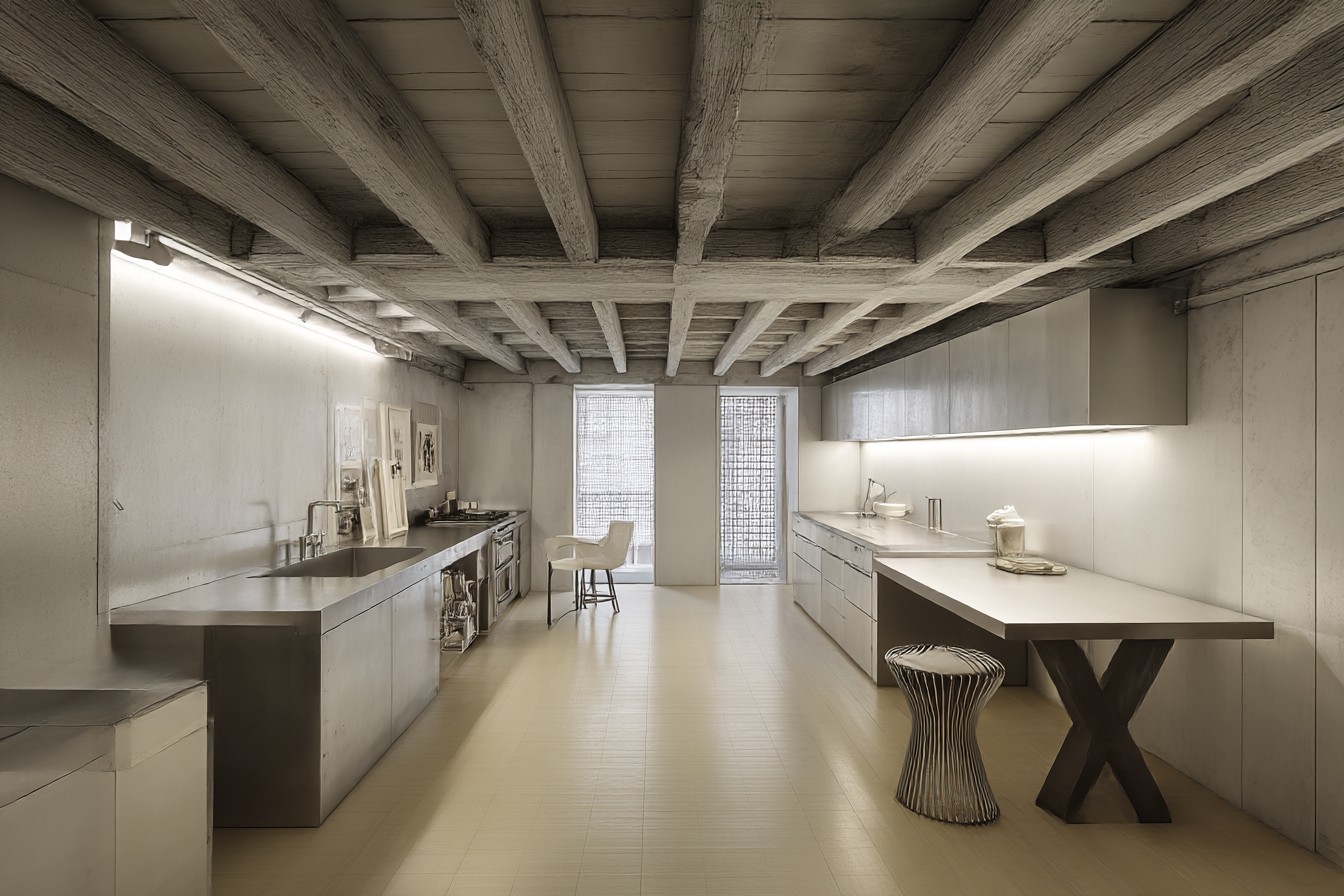
The beauty of these universal design approaches is their invisibility. Unlike the institutional-looking modifications of the past, today’s age-friendly features enhance both function and form. Most visitors to Mark and Joanne’s kitchen would never identify it as particularly “accessible”—they’d just notice it feels comfortable, intuitive, and well-designed.
This brings me to perhaps the most important point about aging-friendly home updates: the best time to implement them is before you need them. Incorporating universal design principles during regular renovations and updates is far more cost-effective than emergency modifications after an accident or health change. It’s also emotionally easier to choose these features when they’re part of an overall design vision rather than a reluctant response to new limitations.
Andrea and I now evaluate every home project through this lens: How will this work for us in 10 years? In 20 years? Could we navigate this space with temporary or permanent mobility challenges? These questions have led us to make small but significant changes throughout our renovation projects—wider doorways, strategically placed lighting, thoughtful hardware choices—that enhance our home’s functionality today while preparing it for our future needs.
The extended benefit of this approach is that these modifications make our home more welcoming to visitors of all ages and abilities. My father-in-law can now visit without dreading the bathroom. Our friend who uses a wheelchair can come for dinner without elaborate advance planning. Parents with strollers can navigate our entry more easily. These aren’t special accommodations—they’re simply good design that works better for everyone.
If you’re considering your own age-friendly updates, start by identifying the most-used spaces in your home and their potential friction points. Bathroom safety, kitchen functionality, and home entry/exit routes typically offer the highest return on investment both in daily usability and long-term home value. Look for opportunities to incorporate universal design principles during regular maintenance and updates rather than as separate “accessibility projects.”
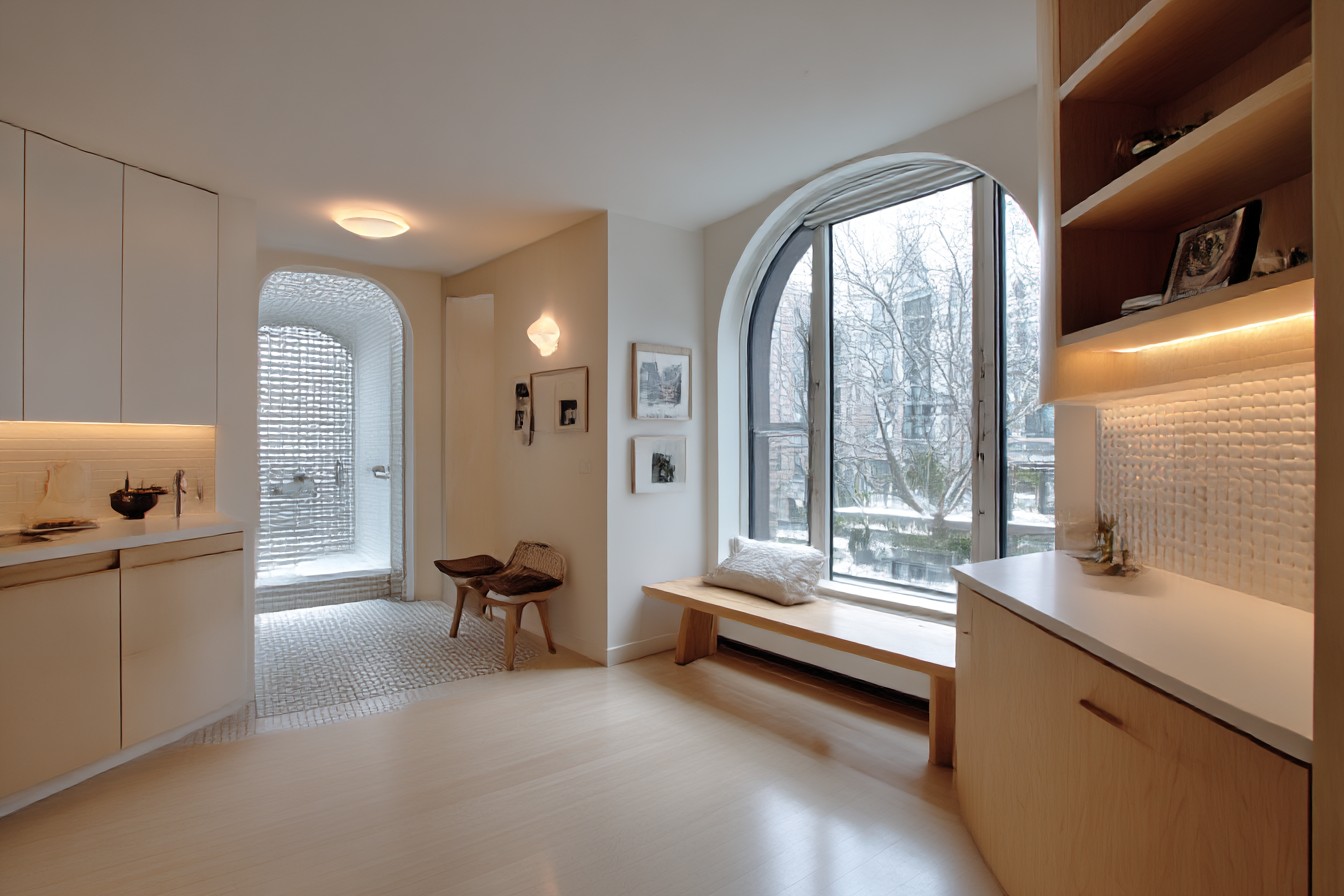
Remember that small changes can make significant differences: lever handles instead of knobs, strategic lighting improvements, thoughtful furniture arrangement to create clear pathways. Not every modification requires renovation or significant expense.
Perhaps most importantly, shift your thinking from “accommodations for limitations” to “design for enhanced living.” The best universal design doesn’t just remove barriers—it actively improves spaces for users of all ages and abilities. It’s not about designing for disability; it’s about designing for reality—the reality that human bodies change, visitors have diverse needs, and flexibility serves everyone better than rigidity.
As for our Tudor’s ongoing renovation, we’ve embraced what I call “stealth universal design”—integrating age-friendly features so seamlessly that they’re noticed only in their function, not their appearance. The curbless shower we’re planning for our primary bathroom renovation will look like a high-end spa feature while eliminating a major barrier. The motion-sensor lighting we installed along the hallway seems like a convenience for midnight wanderings but will become a safety feature as our vision changes with age.
These thoughtful adaptations ensure our home can continue to serve us well through all life stages—from active middle age through retirement and beyond. Because ultimately, a truly great home isn’t just one that looks beautiful in photos; it’s one that supports its occupants through all of life’s changes without constant compromise or modification. And that’s a standard worth building toward, regardless of your current age or ability level.